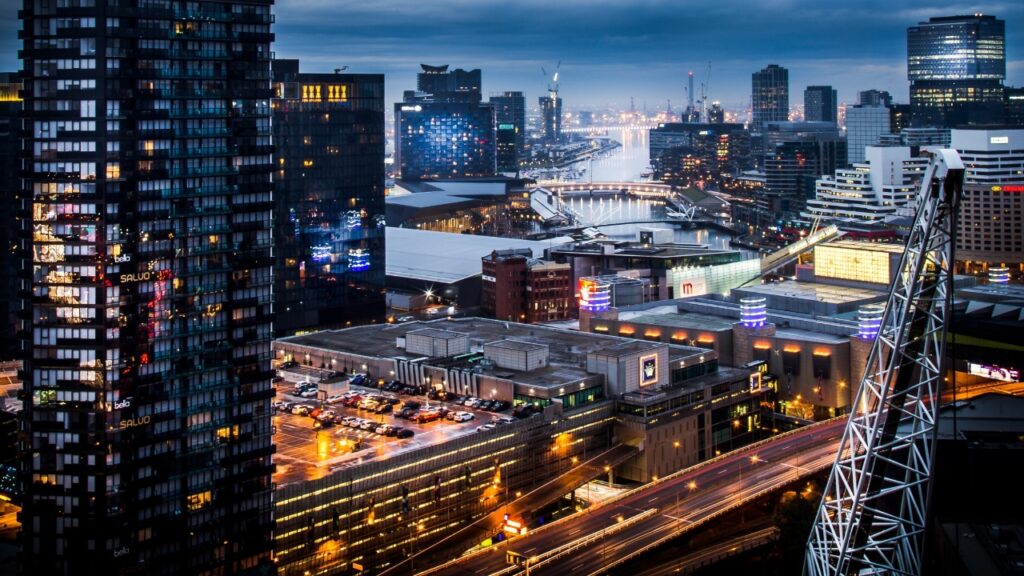Smart cities are transforming urban landscapes by integrating advanced technology, infrastructure, and equipment to create efficient, sustainable living environments. In India, smart city initiatives are leading a revolution, reshaping urban areas to tackle challenges like overpopulation, pollution, and resource management. This blog explores the pivotal role of infrastructure and equipment in driving the future of smart cities, highlighting key trends and insights.
The Role of Infrastructure in Smart Cities
Infrastructure is the backbone of every smart city project, facilitating seamless operations and citizen engagement.
Sustainable Transport Networks
- Smart cities prioritize eco-friendly transport systems, such as metro networks and electric vehicle (EV) charging stations, to reduce carbon footprints. As urban infrastructure and population is going to increase, the need for smart transport networks will become necessary. In order to make the transportation become more seamless we need smart transport infrastructure.
Smart Utilities
- IoT-enabled water management and smart grids for electricity improve efficiency and reduce waste. Good utility infrastructure is very mandatory so we can improve resource management.and reduce waste as well.
Urban Green Spaces
- Cities like Pune and Ahmedabad focus on integrating parks and green zones, enhancing liveability. These spaces make the city more breathable and more liveable as well.
Investments in robust infrastructure ensure these cities cater to growing populations while maintaining sustainability.
Equipment Powering Smart City Growth
Cutting-edge equipment is instrumental in building and maintaining smart cities, enabling precise execution and long-term efficiency.
IoT-Enabled Construction Machinery
- Smart machinery reduces project timelines and enhances precision through real-time monitoring. Smart construction equipment with the help of IoT can provide real time data on performance, fuel usage and potential faults. This not only makes the project more seamless but also ensures safety and quality as well.
Renewable Energy Equipment
- Solar panels and wind turbines are vital for achieving energy goals in urban areas. Equipment like these can help us to achieve energy independence and lower the carbon footprint. Such integration ensures proper resource management for the city.
Predictive Maintenance Tools
- AI-powered equipment anticipates maintenance needs, ensuring minimal disruptions to city services. These tools can help us to find faults and predict any failure before any hazard can happen.
The use of innovative equipment not only enhances productivity but also aligns with sustainability goals.
Emerging Trends in Smart Cities
To stay relevant and future-proof, smart cities are adopting these key trends:
AI and Data Analytics
- Leveraging data for traffic management, public safety, and urban planning. AI and Data Analytics can help us to understand actionable insights from raw data. This can help in city management, traffic management, predicting crime patterns etc.
5G Connectivity
- Supporting faster and more reliable IoT device integration. Faster the connectivity will lead to minimal latency in data transfer. Hence more seamless communication and data transfer.
Blockchain Security
- Strengthening data transparency and operational security. Blockchain can provide an added layer of protection and transperancy and securing data transactions.
Integrated Mobility Solutions
- Combining public transport, EVs, and ride-sharing into cohesive systems. Combining multiple modes of transportation creates a unified mobility network.
Digital Twin Technology
- Creating virtual replicas of cities to optimize urban management. These virtual replicas can help the urban planners to optimize city infrastructure, predict maintenance needs and test solutions.
These trends reflect how smart cities utilize infrastructure and equipment to meet evolving demands.
Challenges and Lessons Learned
Implementing smart city projects comes with challenges, including funding limitations and technological integration issues. However, successful projects like Bhubaneswar, Indore, and Coimbatore offer valuable lessons:
- Citizen-Centric Design: Engaging local communities ensures relevance and usability.
- Public-Private Partnerships: Collaborative efforts accelerate progress and funding.
- Localized Strengths: Tailoring projects to local needs improves efficiency and acceptance.
These examples showcase how strategic planning and execution can overcome common hurdles.
Future Outlook for Smart Cities
India’s next wave of smart cities will prioritize:
- Expanding initiatives to Tier-2 and Tier-3 cities.
- Enhancing sustainability through renewable energy and green construction practices.
- Deploying adaptive infrastructure to combat climate change effects.
As smart cities evolve, they will redefine urban living with advanced infrastructure and cutting-edge equipment.
Conclusion
Smart cities are shaping the future of urban living by seamlessly integrating infrastructure and equipment with technological advancements. As India continues to develop its smart city initiatives, the focus remains on creating efficient, sustainable, and inclusive urban environments. Embracing these trends and overcoming challenges will pave the way for the cities of tomorrow.
